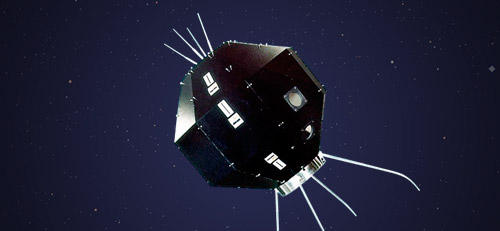| Name (pre-launch in parentheses) | OHSUMI |
|---|---|
| International Designation code | 1970-011A |
| Objectives | To study satellite launch technologies by M (Mu) rocket and perform an engineering experiment on the satellite. |
| Launch Date | 13:25, February 11, 1970 (JST) |
| Launch Location | Kagoshima Space Center (Uchinoura) |
| Launch Vehicle | L-4S-5 |
| Weight | 24 kg (after combustion of the 4th motor) |
| Shape | Overall length 1,000mm Max. diameter 480mm (at 4th motor of rocket) Equipped with two hook-type antennas and four beryllium-copper whip-type antennas (circular polarization) |
| Orbital Altitude | Perigee 350 km, Apogee 5,140 km |
| Orbital Inclination | 31° |
| Type of orbit | Elliptical |
| Orbital Period | 145 min |
| Scientific Instruments | ・Longitudinal precise accelerometer ・Longitudinal accelerometer ・Strain guage-type thermometer ・Telemetry transmitter ・Beacon transmitter ・Pilot transmitter ・Installed silver oxide-zinc battery with capacity 5AH as power supply |
| End of Operation | February 12, 1970 |
| Reentered Date | August 2, 2003 |
| Operation | From 15:56:10 to 16:06:54, about two and a half hours after the launch, a radio signal from OHSUMI was received at Uchinoura to confirm its first revolution around the earth. The radio signal level gradually fell and the next day, February 12, during its 6th revolution, it became very faint. The signal could no longer be detected during the 7th revolution. It is believed that the signal of OHSUMI was lost 14 to 15 hours after launch, probably caused by rapid reduction of power capacity because of higher than expected temperatures. The satellite continued to orbit the earth, and at 05:45 on August 2, 2003 (JST) it reentered the atmosphere and was melted. The reentry location was around Lat. 30°3' N, Long. 25°0' E, over North Africa (border between Egypt and Libya). |


